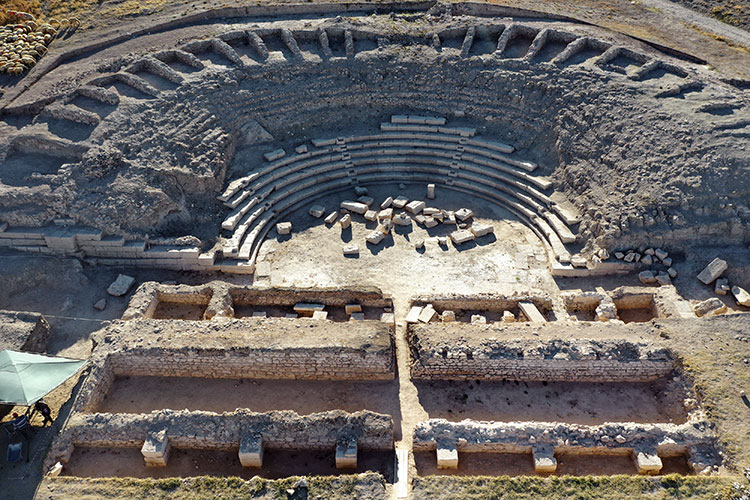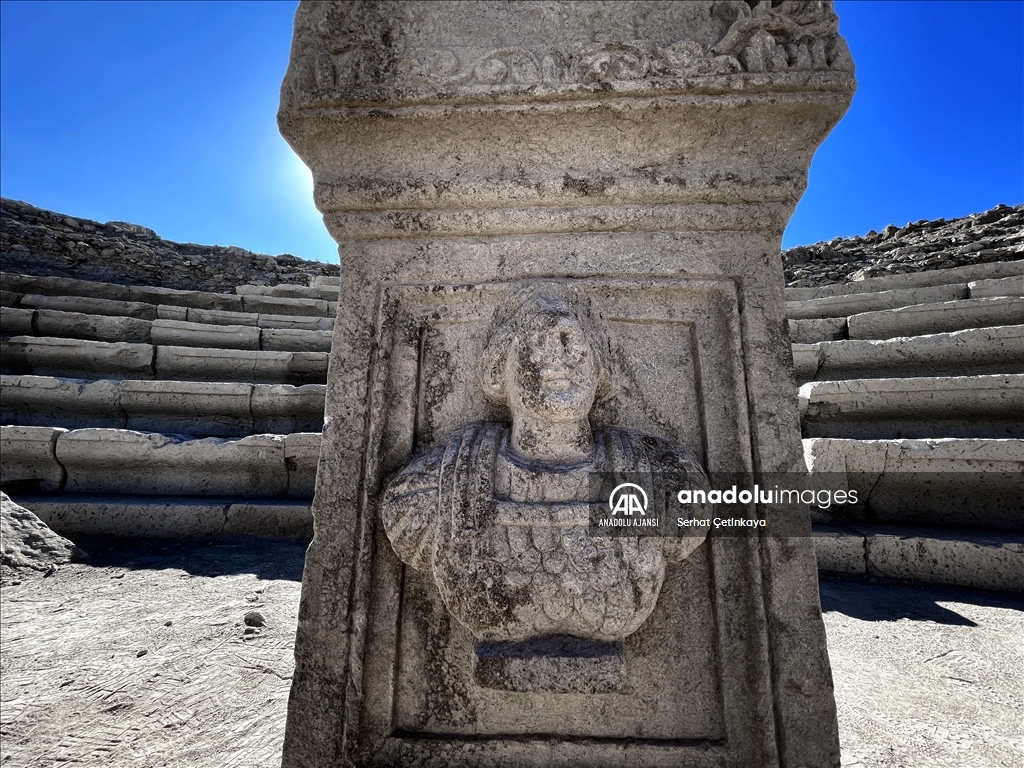Savatra Ancient City is located within the borders of Yağlıbayat Neighborhood in the Karatay district of Konya province, Türkiye, at the foothills of Bozdağ National Park. In antiquity, it was a settlement belonging to the region of Lykaonia. During the Roman period, the city functioned as a military garrison. It is situated about 13 kilometers along a stabilized road branching off from the 55th kilometer of the Konya-Aksaray highway. Ancient sources refer to the settlement as "Savatra" or "Soatra," and its name is said to mean “holy father.” The city was inhabited from the Ancient period through the Ottoman era, and part of the modern Yağlıbayat settlement is built upon the ruins of the ancient city.

Savatra Ancient City(Anadolu Ajansı)
History
The history of Savatra dates back to the 4th century BCE. According to the ancient geographer Strabo, Savatra was located near Garsaura (modern Aksaray) and was famous for its deep wells, the water from which was sold commercially. Charles Texier confirmed Strabo’s descriptions. Excavations conducted in 1984 in Yağlıbayat revealed ruins belonging to the ancient city. Savatra came under Roman rule in 27 BCE. Scholar Ramsay notes that Savatra had a mint starting from the reign of Emperor Trajan (98–117 CE), and during Antoninus Pius’s rule, coins bore the inscription “Lykaonia Union.” In the Byzantine era, Savatra was a bishopric and sent representatives to the councils of Istanbul in 381 and Chalcedon in 451. The settlement continued during the Seljuk period and was known as "Bali Bayat" during the Ottoman era. Today, the region is inhabited by Tatar Turks who migrated from Crimea in the late 19th century.

Savatra Ancient City (Anadolu Ajansı)
Architectural Features
Archaeological investigations in Savatra have uncovered numerous structures such as a theater, council building, fortress, tower, mint, church, underground tunnels, ancient roads, and defensive lines. In the southeast part of the city are the remains of a fortress and a small ancient theater. Excavations at the theater have revealed most of the seating area (cavea) and the stage building. A four-line Greek inscription on an altar found during the excavations documents a donation to the theater by a local community called "Aurelia." The altar’s front side features depictions of a soldier, banner, and victory wreath, reflecting the city’s military character. This altar is estimated to date from the 2nd or 3rd century CE. Additionally, various necropolises, tells, and settlement traces have been identified in the city.

Savatra Ancient City (Anadolu Ajansı)
Restoration Works
Restoration and excavation work at Savatra began in 2017 with the permission of the Ministry of Culture and Tourism. The surface surveys and excavations are led by Assoc. Prof. Dr. İlker Işık, head of the Department of Conservation and Restoration of Cultural Heritage at Selçuk University Faculty of Letters. These activities continue under the administration of the Konya Museum Directorate, with support from Karatay Municipality and Konya Metropolitan Municipality. Excavations at the ancient theater have been ongoing for about three years and are nearing completion, with plans to start restoration works. The limited number of seating steps in the theater suggests that restoration will be relatively easier. Some artifacts uncovered in the ancient city are exhibited at the Konya Archaeology Museum.
 Savatra Ancient City(Anadolu Ajansı)
Savatra Ancient City(Anadolu Ajansı)


